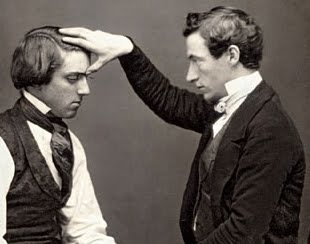Hypnosis Myths
For those of you reading this who don’t know it, I’m certified as a hypnotherapist and I’m certified to teach hypnotherapy. I’m tentatively scheduled to be teaching some of the basics of hypnotherapy at Pantheacon in San Jose, CA, February February 15–18, 2013. Many authors and speakers, including several from Llewellyn, will be there.
Hypnosis and hypnotherapy have been known for a long time. There were “sleep temples” in ancient Egypt where people who were ill would be put in a trance, receive some sort of suggestions, and later leave the temples healed. In ancient India, one of the oldest books, the Mahabharata (which dates back to at least 4,000 years ago) makes statements about the nature of disease which is still part of the theories behind hypnotherapy:
There are two classes of diseases—bodily and mental. Each arises from the other and neither can exist without the other. Thus, mental disorders arise from physical ones and, likewise, physical disorders arise from mental ones.
—The Mahabharata
The Sanskrit (ancient Indian language) word for hypnosis is sammohan, and the pre-Hindu Tantrics would use hypnotic techniques during meditation. Some even claim that meditation is not possible without sammohan.
In short, hypnosis has been around for a very, very, long time.

Modern understanding of hypnosis began over 200 years ago, and has evolved relatively quickly with a major change leading to contemporary practices beginning with Dr. Milton Erickson about 50 years ago. Llewellyn publishes some great books on hypnosis including Hypnosis for Beginners, New Age Hypnosis, Self-Hypnosis for a Better Life, and Self-Empowerment Through Self-Hypnosis.
 If you want to learn hypnosis or self-hypnosis from a book and make practical use of this technique, these are some great books to start your studies.
If you want to learn hypnosis or self-hypnosis from a book and make practical use of this technique, these are some great books to start your studies.
Unfortunately, most people seem to have a total misunderstanding of hypnosis. This is because what most people actually know of hypnosis comes from movies, TV, and novels, where hypnosis is often used inaccurately in order to move the plot. Some people only know of hypnosis through stage shows, where hypnosis is used to entertain and only small aspects of it are emphasized, sometimes in humiliating ways.
As a result, most people have fantasies about what hypnosis can do and what hypnotists can do. This was recently brought to my attention by one of my hypnosis teachers, Brian David Phillips. On his blog he reports a situation that happened in Hawaii. This, itself, is taken from a Hawaiian news report.
The Old Con Game
The report describes an old and terrible con being used on elderly women in Hawaii. The con artists convince their victim that there is some sort of curse on them. The only solution is to bring the con artist their money and valuables in some sort of container, in this case, a large envelope. The con artist then does something to the container (in this case she does special prayers over it) and returns it to the victim. By the time the victim opens the package, it has been secretly changed, and instead of money and valuables, there is just paper and worthless trinkets. The con artist is gone. This crime is probably far more common than is reported because, as with many such cons, the victim is to embarrassed over their gullibility to report it.
The thing that makes this case a bit different is that according to the report, the con artists use “superstition and possibly hypnosis.” After all, how could these victims fall prey to the con artists if they’re not hypnotized?
As Phillips writes,
I’m going to go ahead and call BS on this one right off the bat. While the crimes are very real and the victims have had their life savings taken away by a trio of heartless cons, that’s all it is . . . a confidence game. It’s an old con and one we’ve seen variations of time and time again…[The victims] were taken advantage of by professional criminals who used social influence to leverage [their] response.
I completely agree. This had nothing to do with hypnosis. This con is completely based on taking advantage of people’s gullibility. No hypnosis was needed, no hypnosis was necessary, no hypnosis was used. To blame it on hypnosis is to look for a scapegoat. Hypnosis isn’t it.








Unfortunately, the problem surrounding the myths and misconceptions of hypnosis is even deeper than that. The people of today got their misconceptions about hypnosis from the writers of the previous generation, who got the same misconceptions from the previous generation, etc. Its a cycle that’s been occurring at least since the days of the earliest form of mass entertainment, radio. Unfortunately, without something to counter these misconceptions, the people of today with their misconceptions will be writing the novels, TV episodes and movies for tomorrow’s generation, only to perpetuate them.
I think there will always be a slight element of misconception towards to the practice of hypnotherapy due to the mind over matter remedy effect. However, numbers of visitors to these centres has drastically increased with the mounting pressures within our daily lives. Hypnotherapy can not only help control certain fears or phobias we may have within our lives, but also control daily occurrences such as stress and strains. I am a firm believer in its power to make us live improved lifestyles.